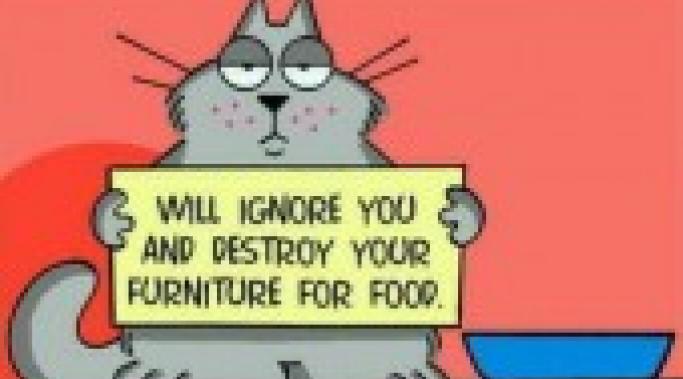Well it's that time again; time to wish Funny In The Head readers a Happy New Year. But before we go any further, let us concede quickly that this familiar, comforting phrase means different things to different people, indeed, it would be hard to find two people who defined a happy new year in identical terms. So I'll hasten to qualify by saying that I hope for you a New Year which conforms to your conception of what a New Year resembles, rather than someone else's.
Which brings us, I hope, to the subject of today's column, the advisability of New Year's resolutions among those who, through no fault of their own, reside in Greater Whackadoomia, an ever-increasing population cluster located within whistling distance of the outskirts.
Since that awe inspiring moment when time and human introspection first collided, guilt-ridden people have attempted to ascend the moral ladder by means of the psychological parlor trick known as - a New Year's resolution.
Public Health
When an elite SWAT assault force, comprised of battle-ready psychiatrists from some of our nation’s most horrifying backwaters of mental instability, leaped from the belly of a B-52 bomber in Washington, D.C. today, tourists and off-duty policeman alike were stunned and amazed. Falling in tight formation, these plucky providers landed without incident in the Capitol building parking lot. After a few minutes of chute detaching the sanity squadron marched single file into the quiet, once-dignified chamber housing a hopelessly deadlocked House and Senate.
Moments later, Quentin Nightingale, Secretary of Sanity, made a surprise appearance on the Emergency Broadcasting System. “Ladies and gentlemen," he began, “at 12:15 p.m., eastern standard time, an assault team of specially trained psychiatrists with boots on the ground, hand-to-hand experience facing extreme insanity staged a surprise occupation of Congress. These skilled, compassionate medical professionals will control Congress until, and not before, Congress can collectively demonstrate to a duly appointed panel of medical professionals that it is no longer insane.
In the damp church basements of recovery it is often observed that the 12 steps of alcoholics anonymous are in the order they’re in for a good reason and one should work them sequentially. This tenet is underscored because, as a rule, alcoholics are belligerent, defiant, and rebellious in an infantile, pointless sort of way.
Celebrating The Right To Be Wrong
Dipsomaniacs simply must do as they please, no matter how much more difficult, time-consuming, and aggravating their idiosyncratic path may be. Whenever “some assembly” is required, rest assured that the very first thing they did after unpacking the contents was throw away the instructions because – well, why on earth would you rely on the opinion of experts when you have your own complete ignorance, honed to perfection over years of not listening to anyone, nearby?
Analysis, also known as talk therapy, is slow, very slow. If it were any slower it would move backwards. In fact, I was in therapy on a weekly basis for a year and a half before I realized my psychiatrist didn’t speak English, and was gone the entire month of August.
If you dive right in and face your issues fearlessly, you’ll be able to get really serious about emotional growth after a five-year get acquainted period during which you and your psychiatrist engage in what Quakers commonly refer to as silence.
People occasionally make fun of psychiatry’s glacial pace, sometimes referred to as “slower than baseball” and “as exciting as farming”. But mirth, merriment, jibes and snarky remarks aside, therapy involves peeling away layer after layer of onionskin, chopping what’s left, and crying. It’s painful, depressing, and feels as if it will never end, like a TED Talk; but unlike a TED Talk, it’s worth the time and aggravation.
When we gaze fondly backwards and survey the expansive history of medicine, certain names come to mind immediately. Hippocrates, Philip Syng Physick, and Donovan Leitch, who popularized the practice of bloodletting before going on to become a folk singer of some renown.
When the focus is on mental health, there can be no debate that Freud, Jung, and Lafayette Ronald Hubbard are elbowing each other for center stage.
But there is a world even loftier than these, harder to define and understand. It is a world where art meets science, science meets commerce, commerce meets art and confusion doesn’t merely reign, it pours. I am referring of course to the incomprehensible, Byzantine maze of human activity loosely referred to as fundraising.
Until recently, conversations about healthcare funding led inevitably to the great Kaiser Permanente. Kaiser Permanente, third son of Kaiser Wilhelm II, made healthcare history by creating the nation’s first, physician-centric Integrated Health Network predicated on an HMO model. Mr. Permanente could not be matched when it came to putting dollars to work in the service of healthcare, some would say wellness. Then came Susan G. Komen®.
The insanity defense has long endured contempt and disdain from the general public because it is perceived as a sleazy loophole allowing the dregs of our criminal class to fall through cracks in the judicial system which, we may all agree, is usually characterized by genteel civility and scrupulous even-handedness. One must wonder; has the mentally ill populace not suffered enough – both under the weight of maladies not of their own making – and the bitter, acidic atmosphere of stigma, discrimination, and underemployment? I say “Yes” – yes we have!
When it comes to mental healthcare, ours is a golden age indeed. Short centuries ago, strange rangers like me would have seen the business end of society’s wrath and suffered mightily. Options included being tortured until cured, or dead, whichever came first, being burned at the stake until cured, or dead, whichever came first, stoning, caning, sarcasm, and ostracism to the far flung hinterlands where jackals stole what little food was available and rendered sleep impossible with their endless howling.
Today, mental health marches across the landscape spreading chuckles, mirth, merriment, guffaws, smirks, chortles, wry little smiles, deep appreciation for the little things of life, and bills. Freedom from the bondage of whackadoomiousness ain’t free, we know that, but most of us are quick to point out that it’s cheap at twice the price – after all, the alternative is intolerable. And so, with global endorsement, lavish funding, and society’s imprimatur, one would imagine that mental healthcare is making tremendous gains, and it is, but not uniformly.
According to a recent study conducted by the ASAAS (American Society for the Advancement of American Societies), over 93% of U.S. citizens will be touched by mental illness at some point in their lives. With the 2012 census weighing in at a portly 312,780,968, that works out to really a lot of people.
A more detailed breakdown of this massive demographic is very instructive, especially in light of challenges encountered by the mentally ill when seeking employment. The following terms, sanctioned by ASAAS, indicate psychological impairment on an ascending scale of severity (least to worst).
11% - personality enhanced
7% - characters in search of a playwright
9% - strange arrangers
13% - alternate reality ramblers
8% - attending a séance with Syngen
15% - antediluvian starfish
7% - sea lion impersonators
20% - puzzled jig saw chipped tooth sharpeners
3% - bananapram umbrellastand chiming lunar tox
Today, Funny In The Head is taking a break from the usual frivolity to help my dear friends at HealthyPlace roll out their “Stand Up For Mental Health” campaign. I believe this subject is absolutely essential to all of us who, in one way or another, have been touched by mental illness.
It’s been a long time since I had a manic episode, but I certainly remember them vividly. One of the hallmark components was an intense sense of urgency. I lived entirely in the moment, a state of being at once exhilarating and terrifying. It was as if I had been cut loose from the restrictions of time; I had no past or future. My existence resembled the reality described by William Blake – infinity in a grain of sand and eternity in an hour. When one is strapped to the nose cone of a rocket one does not think much about time – one thinks about each instant as it happens.
An essential element of living successfully through every manic moment, for me at least, was the ability to move wherever, whenever, I wished. Boundaries of any sort were anathema to me. I was always ahead of the moment, faster than reality, pushing life along so it would catch up with me. I was ready for whatever came next even though I had no idea what that might be. I flicked the ashes off my cigarettes before there were any. At bars and restaurants I always paid in cash – using exact change – so that I was free at the exact moment anxiousness set in. To fully embrace the feeling of absolute freedom I felt it was necessary to believe I was already prepared for what was to come. I was hyper-vigilant.









